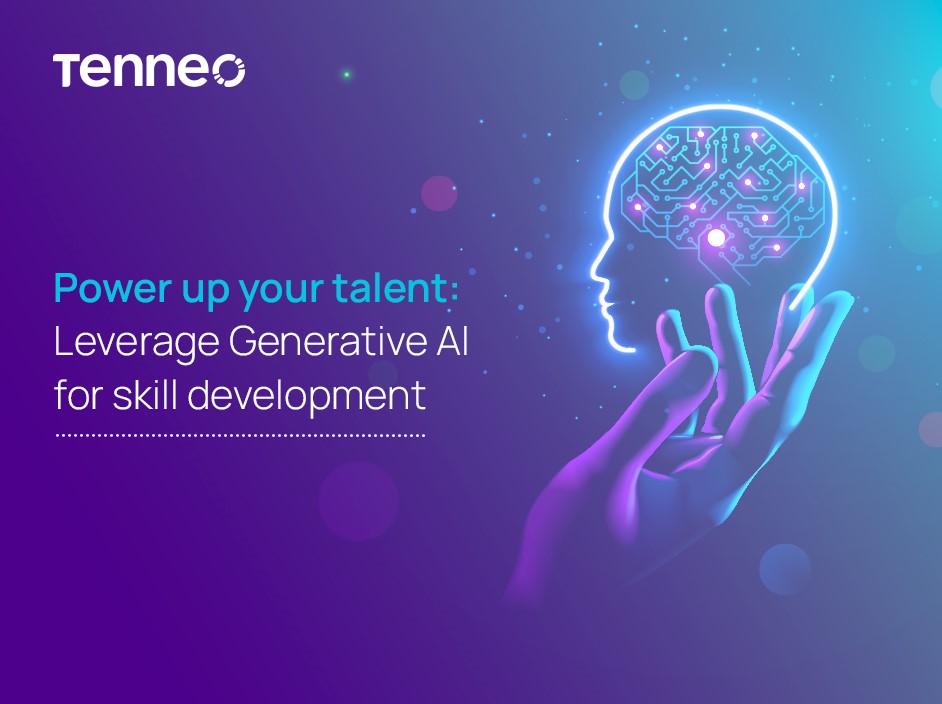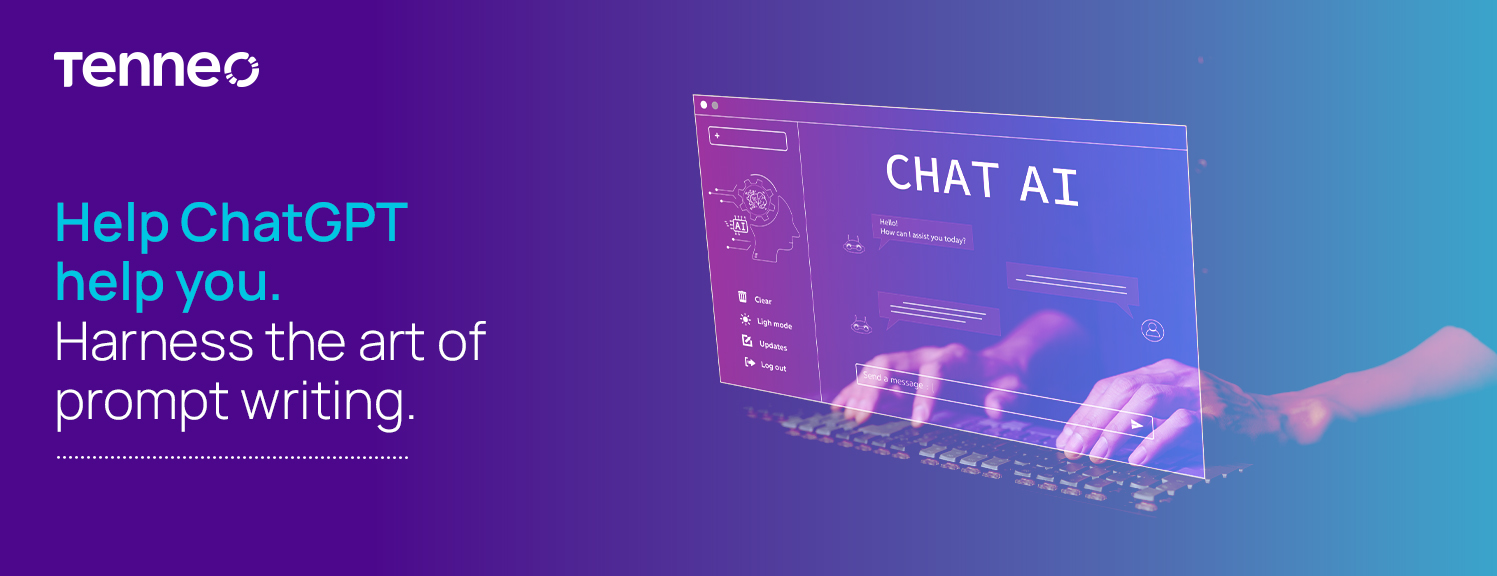
Can Generative AI Replace L&D Professionals?
July 12, 2023
Accelerating Employee Skill Development with Generative AI: A Guide for L&D Professionals
July 31, 2023
Can Generative AI Replace L&D Professionals?
July 12, 2023
Accelerating Employee Skill Development with Generative AI: A Guide for L&D Professionals
July 31, 2023Unlock Learning Potential: Generative AI Prompt Writing for L&D Professionals

In the rapidly evolving landscape of employee training, Learning and Development (L&D) professionals are continually seeking innovative approaches to engage learners and optimize their learning outcomes. Generative AI, powered by advanced language models, offers a unique opportunity to augment training content creation. However, to leverage the true potential of generative AI, L&D professionals need to master the art of writing effective prompts. We will explore how L&D professionals can leverage different types of ChatGPT prompts for creating and improving training content.
- Clear and Specific Prompts
When working with generative AI models, it is crucial to provide clear and specific prompts to guide the system's response. Ambiguity in prompts can lead to irrelevant or confusing outputs. You should consider including precise instructions, desired learning outcomes, or specific scenarios to ensure the AI-generated content aligns with their training goals.
Examples
1. Develop a comprehensive training module on effective communication skills for managers, including practical exercises and role-playing scenarios.
2. Create a training manual outlining the steps for conducting impactful onboarding sessions for new hires, emphasizing the importance of culture integration.
3. Describe three key principles of customer service that our sales team should prioritize during client interactions.
- Contextual and Relevant Prompts
Context plays a vital role in generating meaningful and relevant responses. L&D professionals should provide sufficient context about the topic, target audience, and any relevant constraints to the AI model. Including specific examples, real-world scenarios, or industry-specific terminology can help the generative AI system produce content that resonates with learners.
Examples
1. As an L&D professional in the technology sector, explain the significance of cybersecurity awareness training and provide specific examples of potential cyber threats employees may encounter.
2. Imagine you are tasked with training employees in a healthcare organization on the importance of patient confidentiality. Develop a training presentation that highlights key legal and ethical considerations.
3. Imagine you are a project manager in the construction industry. Discuss the safety protocols and best practices that should be followed during a high-rise building construction project. - Open-Ended Prompts for Creativity
While specificity is crucial, L&D professionals can also benefit from using open-ended prompts to encourage creativity and exploration. Instead of providing all the details, consider framing prompts that encourage the AI model to generate diverse ideas or solutions. This can spark innovation and enable learners to expand their horizons.
Examples
1. Generate innovative ideas for incorporating gamification elements into our leadership development program to enhance engagement and knowledge retention.
2. Generate five potential strategies to enhance workplace diversity and inclusion initiatives.
3. Imagine you are designing a training program for fostering a culture of innovation. Outline three unconventional activities or exercises that can stimulate creative thinking and problem-solving among employees
- Incorporating Interactive Elements
To promote learner engagement, L&D professionals can design prompts that involve interactive elements. For instance, using fill-in-the-blank prompts, multiple-choice questions, or scenario-based queries can facilitate a more dynamic and participatory learning experience. The generative AI model can then respond based on the learner's inputs, creating a personalized and interactive training environment.
Example
1. Fill in the blanks: The first step in conducting a performance appraisal is ______, followed by ______, and finally ______.
2. Choose the correct option: Which of the following strategies is most effective for conflict resolution? A) Avoidance B) Collaboration C) Competition D) Accommodation
3. Scenario-based question: You encounter a dissatisfied customer who has received a defective product. Describe the steps you would take to resolve the issue and ensure customer satisfaction.
You might also like to read: Can Generative AI Replace L&D Professionals?
Additional Tips for L&D Professionals for Writing Better Prompts
- Analyze Learner Needs
Before generating prompts, L&D professionals should thoroughly analyze the learning needs of their target audience. By understanding the learners' skill levels, preferences, and knowledge gaps, you can tailor prompts that address specific learning objectives effectively. This learner-centric approach ensures the prompts resonate with the trainees and optimize the training experience.
- Use Structured Templates
Structuring prompts using predefined templates can provide a consistent framework for generating content. Templates help you organize your thoughts and ensure key aspects are covered in each prompt. For example, a template may include sections for context, objectives, and guiding questions, facilitating a systematic and coherent prompt-writing process. - Leverage Adaptive Prompts
Generative AI systems can adapt and improve based on feedback. As an L&D professional, you can leverage this capability by gradually refining prompts based on the model's output. By iteratively incorporating insights from the generative AI system and adjusting prompts accordingly, you can enhance the relevance and quality of the AI-generated content over time.
- Experiment with Prompts
To unlock the full potential of generative AI, you should be willing to experiment with various types of prompts. Explore different prompt structures, lengths, or styles to uncover new insights and creative ideas. By embracing experimentation, you can harness the full power of generative AI and continuously enhance the training content.
Conclusion
Generative AI has the potential to revolutionize employee training, providing L&D professionals with a powerful tool for content creation. By honing their prompt writing skills, you can maximize the effectiveness of generative AI models and create training content that is engaging, relevant, and tailored to their learners' needs. By employing effective techniques for better prompt writing, you can elevate the impact of your training initiatives and drive enhanced learning outcomes.
